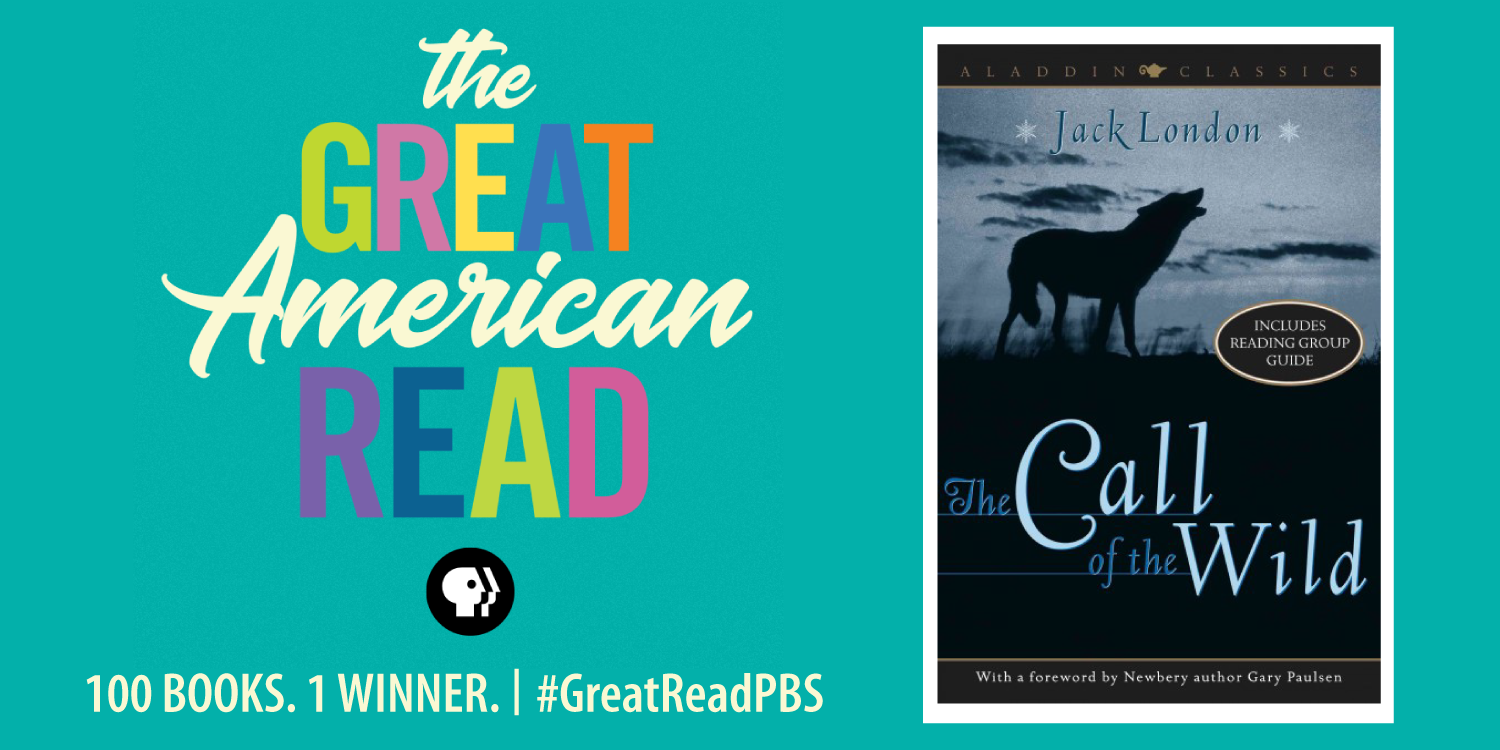The Great American Read is a new eight-part series from PBS that explores and celebrates the power of reading, told through America’s 100 best-loved novels. Join the conversation with PBS and WUCF!
Read the list of 100 books.
Vote for your favorite.
Share your love of reading using #GreatReadPBS.
The series returns to WUCF on September 11 at 8 p.m.
For more information and to vote, visit pbs.org/greatamericanread.
As an employee at Orange County Animal Services, rereading The Call of the Wild by Jack London took on a whole new dimension for me. The lead character, Buck, is not a human. Rather, he’s part Saint Bernard and part Scotch sheep dog. He’s wise and thoughtful, understanding more intricacies of the world than one might think a dog could.
Throughout the book, we watch as Buck’s ownership changes hands five different times. Five times that Buck is thrust into a new family, a new set of rules. The experiences he goes through range from slightly cringe-worthy to downright inhumane and abusive. Buck is repeatedly betrayed by humans, beaten, overworked and sometimes under fed. The Call of the Wild is not for the faint of heart, but it teaches a valuable lesson in terms of pet ownership: above all, animals long to be loved.
Set in 1887 during the beginnings of the Klondike Gold Rush, the story begins with Buck as the pet of Judge Miller, living a cushy lifestyle on a California ranch. Buck is well treated by the Millers, and knows no struggle in the world. That comfort is uprooted, however, when one of Miller’s employees steals Buck and sells him to one of the many prospectors looking for sled worthy dogs. Buck, with his strength and cunning, fits that demand and thus the journey is set in motion with Buck relocating against his will to Alaska.
We witness Buck navigate the demanding life of a sled dog—the laborious task of facing icy trails again and again. It is survival of the fittest in its truest form. Though Buck’s owners change repeatedly, his resilience does not. Buck holds on, despite sometimes deplorable conditions. He quickly becomes the leader of his pack. Each new owner, despite varying levels of understanding regarding how to properly care for dogs, seems to grasp that Buck is special.
Finally, after what feels like many lifetimes, Buck meets David Thornton. At this point in the story, Buck is owned by an inadequate master named Hal, who doesn’t realize that Buck and the other dogs are too malnourished to carry on. Hal lacks a proper understanding of the Alaskan winter, so he stops to ask for the guidance of Thornton, a random man in town. Thornton advises him not to continue sledding, stating that the ice is thin and it’s becoming dangerous. Hal does not heed Thornton’s advice and begins trying to rally the dog team. Buck, however, has lost almost all energy and therefore will not rise from the ground. Buck ignores Hal’s repeated urging to get up and forge onward, infuriating Hal. He loses his patience quickly, and in his ignorance, beats Buck with a club right in front of Thornton. Hal’s club is big, but Thornton’s heart is bigger. Thornton tells Hal that if he raises his hand to Buck again, he won’t live to tell the tale. Hal cuts his losses and sets off, leaving Buck with David Thornton.
Beaten and near-death, Buck watches together with Thornton as Hal leads the dog sled onto the trail. Almost immediately, the ice cracks and the whole sled falls to its occupants’ demise—just as Thornton warned that it would.
At this juncture in The Call of the Wild, we know that Buck is finally safe. From the moment that Thornton steps in as a savior, Buck has the utmost loyalty for him. Readers triumph with Buck as he finally finds the love that he’s yearned for, the love he never knew he wanted. And though that’s not where the story ends, I think that’s where the lesson lies.
The Call of the Wild gives us a unique perspective into Buck’s mind. We feel what he feels; we know what he knows. That’s why when Buck is finally safe and sound after his misfortunes, it’s an emotional win for readers. As a shelter employee, I couldn’t help but envision the many homeless pets that animal shelters see every single day, just looking for their David Thorntons.
I think the biggest takeaway here is that animals need to feel safe. Buck’s fierce loyalty upon finding real and true companionship toward the end of the story represents what every animal wants: to feel secure, to feel loved, to feel like they are a permanent member of a family. The Call of the Wild teaches us that no matter what, animals are to be respected, loved and kept safe.
 |
Alyssa Chandler is a Public Information Officer at Orange County Animal Services. She loves spending time with her three dogs, watching This Is Us, and food blogging on her website, Whisk With Lyss. |
Content written by guest bloggers do not necessarily reflect the views and opinions of OCLS and its staff.

